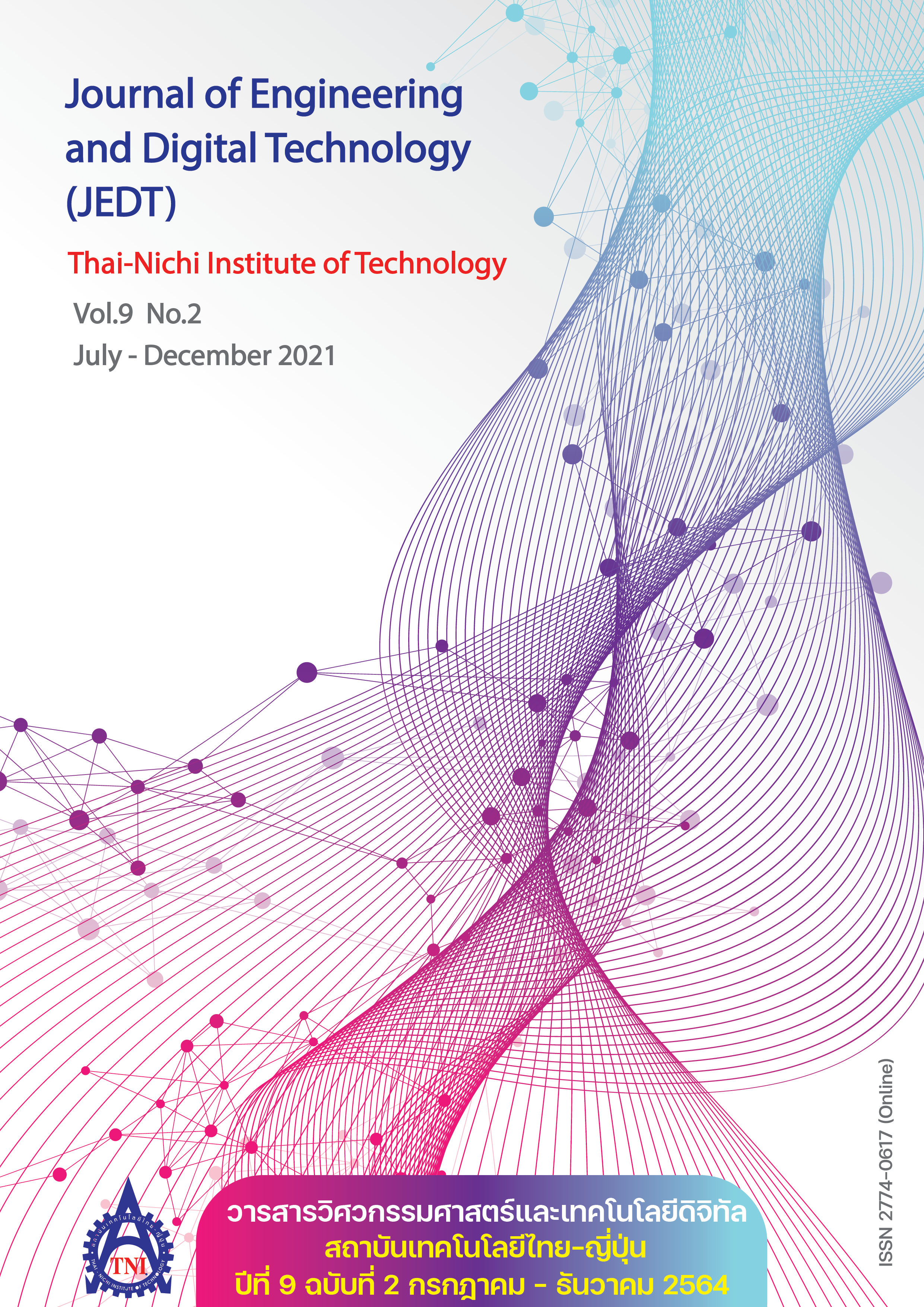Adaptive Pseudocoloring Method based on Color Image Scale for Emotional Art Image
Main Article Content
Abstract
Color can dramatically affect and arouse the emotions. In this paper, we propose a pseudocoloring method by applying the color psychology of color image scale to create an emotional art image. The proposed technique utilizes two key color groups, image segmentation, shape-preserving piecewise cubic Hermite interpolation with uniform lightness difference, Gaussian filter and morphological gradient to develop an adaptive color mapping of grayscale image. The key color groups of the desired emotion are extracted from the color image scale and the color map is generated from the interpolation results in CIELAB color space for each key color group to the segmented area. The simulation results show that the smooth gradient of key colors impressively transfers an implicative emotion of the image. In addition, soft transition between key color groups by smoothing at the edge of segmented area makes the image more artistic appeal. The emotional art image of the proposed pseudocoloring method could enrich the digital decoration and color therapy in both artifactual and natural images.
Article Details

This work is licensed under a Creative Commons Attribution-NonCommercial-NoDerivatives 4.0 International License.
Article Accepting Policy
The editorial board of Thai-Nichi Institute of Technology is pleased to receive articles from lecturers and experts in the fields of engineering and technology written in Thai or English. The academic work submitted for publication must not be published in any other publication before and must not be under consideration of other journal submissions. Therefore, those interested in participating in the dissemination of work and knowledge can submit their article to the editorial board for further submission to the screening committee to consider publishing in the journal. The articles that can be published include solely research articles. Interested persons can prepare their articles by reviewing recommendations for article authors.
Copyright infringement is solely the responsibility of the author(s) of the article. Articles that have been published must be screened and reviewed for quality from qualified experts approved by the editorial board.
The text that appears within each article published in this research journal is a personal opinion of each author, nothing related to Thai-Nichi Institute of Technology, and other faculty members in the institution in any way. Responsibilities and accuracy for the content of each article are owned by each author. If there is any mistake, each author will be responsible for his/her own article(s).
The editorial board reserves the right not to bring any content, views or comments of articles in the Journal of Thai-Nichi Institute of Technology to publish before receiving permission from the authorized author(s) in writing. The published work is the copyright of the Journal of Thai-Nichi Institute of Technology.
References
S. Sankaran, J. M. Maja, S. Buchanon, and R. Ehsani, “Huanglongbing (citrus greening) detection using visible, near infrared and thermal imaging techniques,” Sensors, vol. 13, no. 2, pp. 2117–2130, Feb. 2013, doi: 10.3390/s130202117.
H. Li, C. Chen, S. Fang, and S. Zhao, “Brain MR image segmentation using NAMS in pseudo-color,” Comput. Assist. Surg., vol. 22, no. sup1, pp. 170–175, Oct. 2017, doi: 10.1080/24699322.2017.1389395.
H. Jiang, Y. Zhao, J. Gao, and Z. Gao, “Adaptive pseudo-color enhancement method of weld radiographic images based on HSI color space and self-transformation of pixels,” Rev. Sci. Instrum., vol. 88, no. 6, Jun. 2017, doi: 10.1063/1.4985007.
J. J. McCann and V. Vonikakis, “Calculating retinal contrast from scene content: A program,” Front. Psychol., vol. 8, Jan. 2018, Art. no. 2079, doi: 10.3389/fpsyg.2017.02079.
R. Doi, “Maximizing the accuracy of continuous quantification measures using discrete packtest products with deep learning and pseudocolor imaging,” J. Anal. Methods Chem., vol. 2019, Apr. 2019, Art. no. 1685382, doi: 10.1155/2019/1685382.
Y. Zheng, “X-ray image processing and visualization for remote assistance of airport luggage screeners,” M.S. thesis, Dept. Elec. Eng., Univ. Tennessee, Knoxville, USA, 2004.
L. Jinxiu, L. Junli, and W. Ping, “Pseudocolor coding of medical images based on gradient,” in Proc. 1st Int. Conf. Bioinform. Biomed. Eng., Jul. 2007, pp. 932–935, doi: 10.1109/ICBBE.2007.242.
R. Jayadevan, K. N. Latha, and K. A. Navas, “Automated pseudo-coloring of grayscale images based on contourlet transform,” in Proc. IEEE Nat. Conf. Commun. Signal Process. Netw., Palakkad, India, Oct. 10-12, 2014, pp. 1–6, doi: 10.1109/NCCSN.2014.7001146.
M. Zare, K. B. Lari, M. Jampour, and P. Shamsinejad, “Multi-GANs and its application for pseudo-coloring,” in Proc. 4th Int. Conf. Pattern Recognit. Image Anal. IPRIA 2019., Tehran, Iran, Mar. 6–7, 2019, pp. 1–6, doi: 10.1109/PRIA.2019.8786027.
R. Jayadevan, K. N. Latha, K. A. Navas, and A. Ananthan, “A review on recent pseudo-coloring techniques,” Int. J. Sci. Technol. Eng., vol. 1, no. 11, pp. 344–348, May 2015.
S. Moharreri, N. J. Dabanloo, and K. Maghooli, “Detection of emotions induced by colors in compare of two nonlinear mapping of heart rate variability signal: Triangle and parabolic phase space (TPSM, PPSM),” J. Med. Biol. Eng., vol. 39, pp. 665–681, Jan. 2019, doi: 10.1007/s40846-018-0458-y.
H. Nagumo, New Color Image Chart. Tokyo, Japan: Graphic-sha, 2016.
N. Otsu, “A threshold selection method from gray-level histograms,” IEEE Trans. Syst. Man Cybern., vol. 9, no. 1, pp. 62–66, Jan. 1979.
F. N. Fritsch and R. E. Carlson, “Monotone piecewise cubic interpolation,” SIAM J. Numer. Anal., vol. 17, no. 2, pp. 238–246, 1980.


